No spooky season would be complete without a member of Araneae, the spiders, quite possibly the animal most symbolic of Halloween. What haunted attraction isn’t covered in fake spider webbing? And what child doesn’t bring home at least one plastic spider ring after a night of trick or treating? Today we’re looking at the 2016 Papo “tarantula”, a figure that our own Blaine Mathison stated, “might be the best spider figure ever produced”. That kind of praise from our local entomology expert should be a sufficient review but let’s take a closer look anyway.
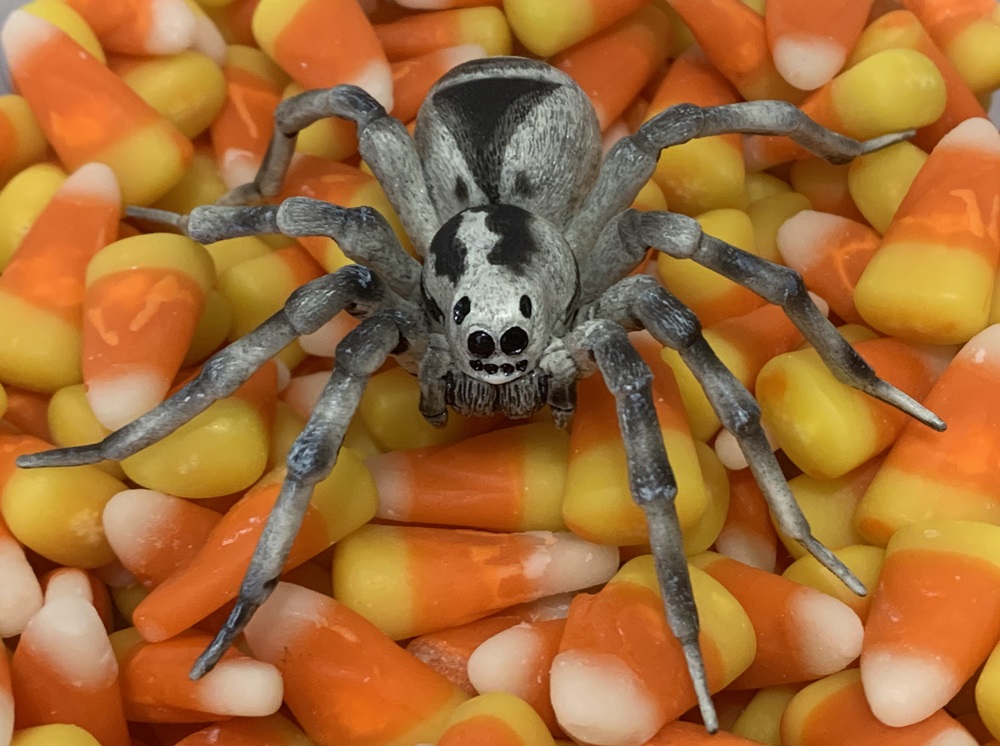
Papo markets this figure as a “tarantula” and although you might think this is a marketing mistake, it’s not. The scientific name of this spider is Lycosa tarantula and although it’s nestled comfortably within the wolf spider family (Lycosidae) and not the tarantula family (Theraphosidae) this is the species originally known as “tarantula”. This spider is found in southern Europe, including the city of Taranto in Italy, and that is where the name tarantula comes from!
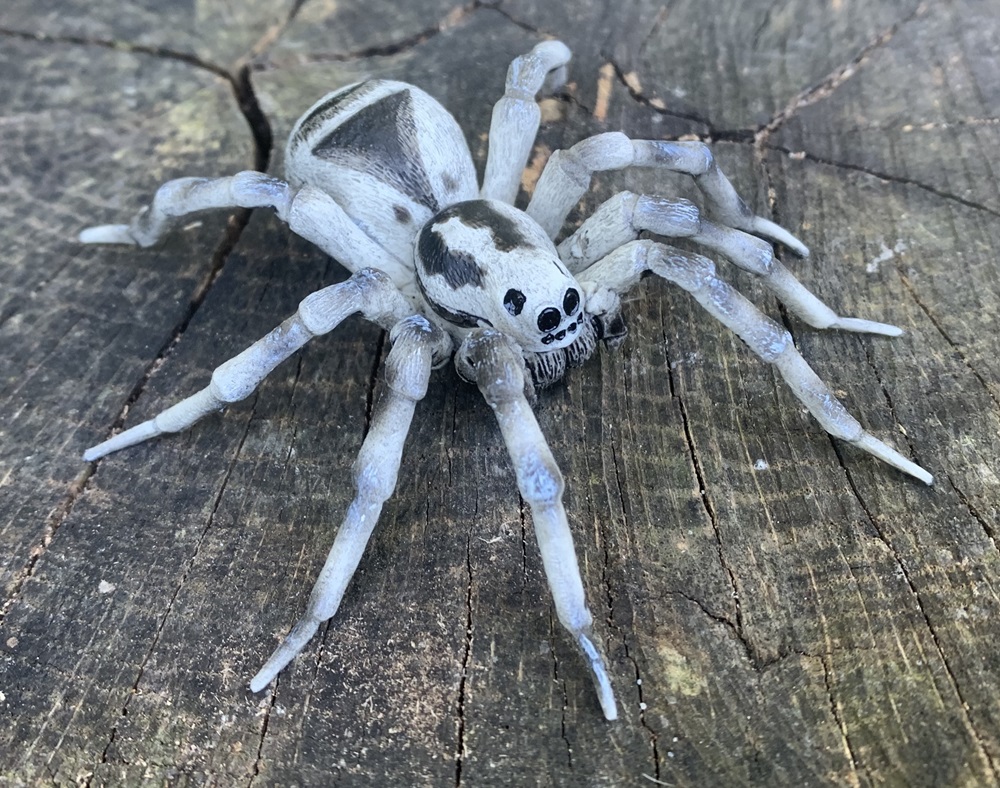
Halloween is a holiday steeped in myth and folklore, and so is this particular species of spider. It was once believed that a bite from this spider would cause tarantism, which would create an impulse to dance until exhaustion within the victim. A type of folk dance known as tarantella was born from this belief. Perhaps consider busting out “the dance of the spider” at your next Halloween party? In reality though, the bite from Lycosa tarantula is considered medically insignificant to humans and comparable to a bee sting.

The tarantula wolf spider is a large species by wolf spider standards. Females can have a body length of 1.18” (2.9 cm) while males can reach 0.75” (1.9 cm). The Papo spider has a body length of 2” (5.08 cm) and a leg span of about 3.5” (8.89 cm).

The Papo tarantula accurately possesses eight eyes, like all wolf spiders, located on the cephalothorax, or head. Two large eyes are positioned on top of the head with two more on the front and four smaller eyes below them. Wolf spiders in general have excellent vision, which is useful since they tend to be active predators. Tarantula wolf spiders live in burrows but will leave them at night to hunt for prey, and in the case of males, look for mates.
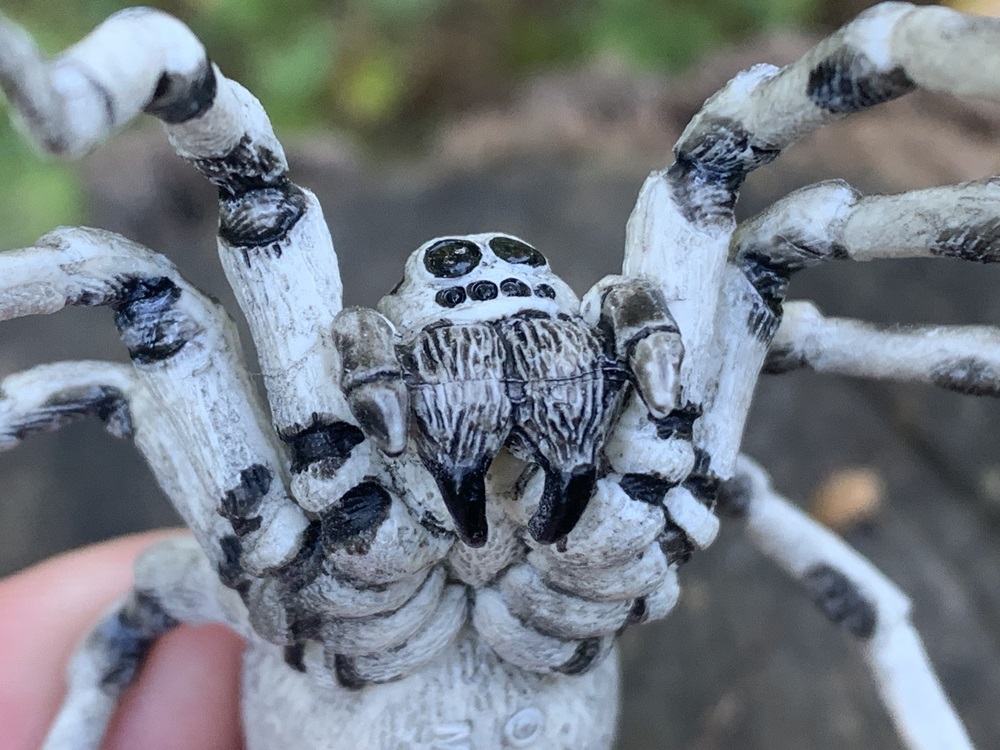
Below the eyes you can see the spider’s chelicerae, or “fangs”, with their pedipalps located on either side. These short appendages are used for grasping, sensing, and communication, among other things. The chelicerae have a furry texture etched into them with the fangs being black, pointed, and smooth. The sculpting on them is quite well done!
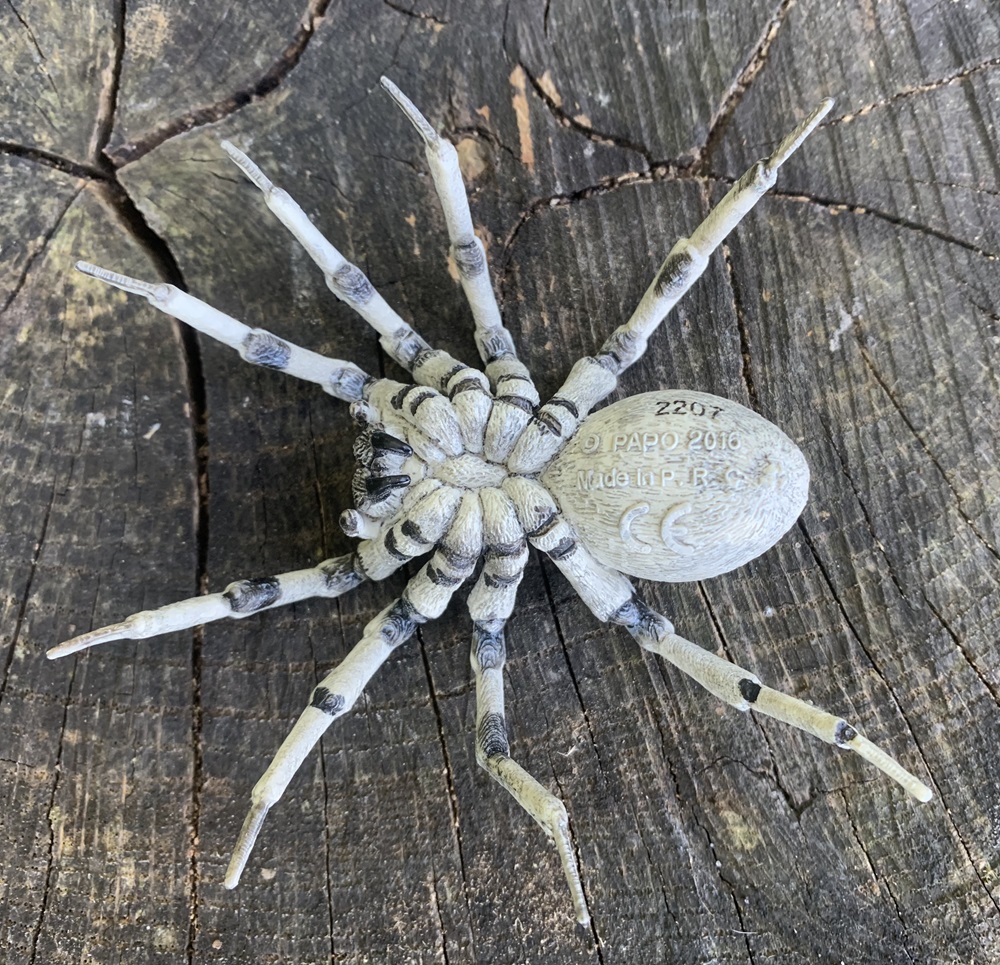
Being a spider, we get four pairs of legs that originate underneath the cephalothorax. The legs have sculpted joints. Each leg has seven segments in life, each with their own name, and it looks like Papo has included them all, but I won’t bother listing them. The legs are soft and rubbery but are stiff enough to maintain their positioning. The abdomen is appropriately large and rounded, with tiny spinnerets on the underside. The entire figure has a light, fuzzy texture.

The figure is painted grayish white with black bands on the legs. Black chevrons are painted on the abdomen with thin grooves etched in between them. The chelicerae are gray but in life tend to be orangish, and the spider tends to have orangish coloration elsewhere that isn’t present here. The underside of the cephalothorax, known as the sternum, should be black but it’s white. The top of the cephalothorax has a black horseshoe shaped splotch. The splotch should really be a set of triangular-like bands that are disconnected, more centrally located, straighter edged, and more symmetrical. Looking at pictures of the toy it seems that there is a degree of variation with the paint application, with some being more akin to the real animal than my copy is.
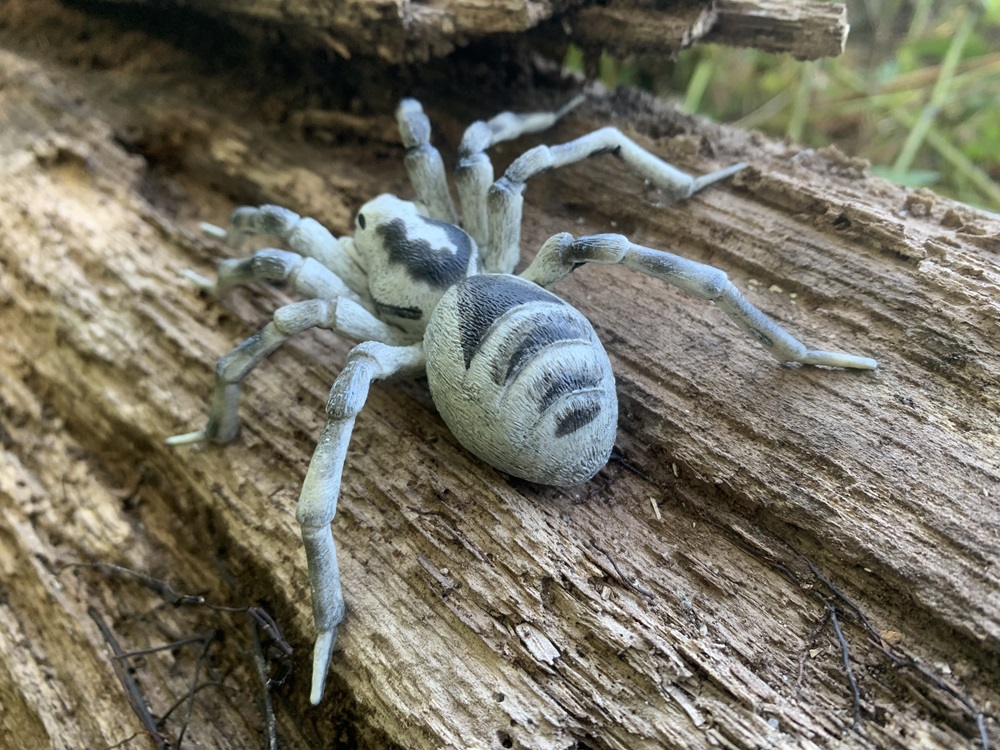
The attention to detail and anatomical accuracy appears spot on here but it seems like a bit more attention could have been afforded to the paintjob. Nitpicks though. The spider is still clearly the species it is meant to represent and exceptionally lifelike overall. It has many potential applications beyond sitting on a shelf, and I think would be a lot of fun for a few spooky season pranks! The Papo tarantula is currently available and retails for about $7.99.

Disclaimer: links to Ebay and Amazon on the AnimalToyBlog are affiliate links, so we make a small commission if you use them. Thanks for supporting us!




Spectacular! Great review!
I did a walkaround of this on the forum a while ago. I have contemplated many times migrating it over to the Blog. I am actually glad I didn’t and you reviewed it; it’s nice to get a different perspective on an arthropod figure!
Thanks! It’s always a bit intimidating reviewing invertebrates with you around. Good to know that you liked this review. I don’t have a lot of spider figures at the moment but I see this one as being a gateway of sorts, I like it a lot. Will still be sticking to western brands though.